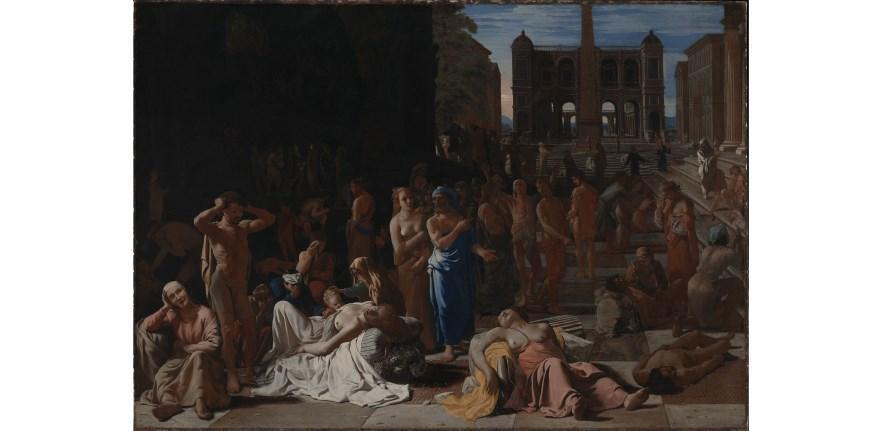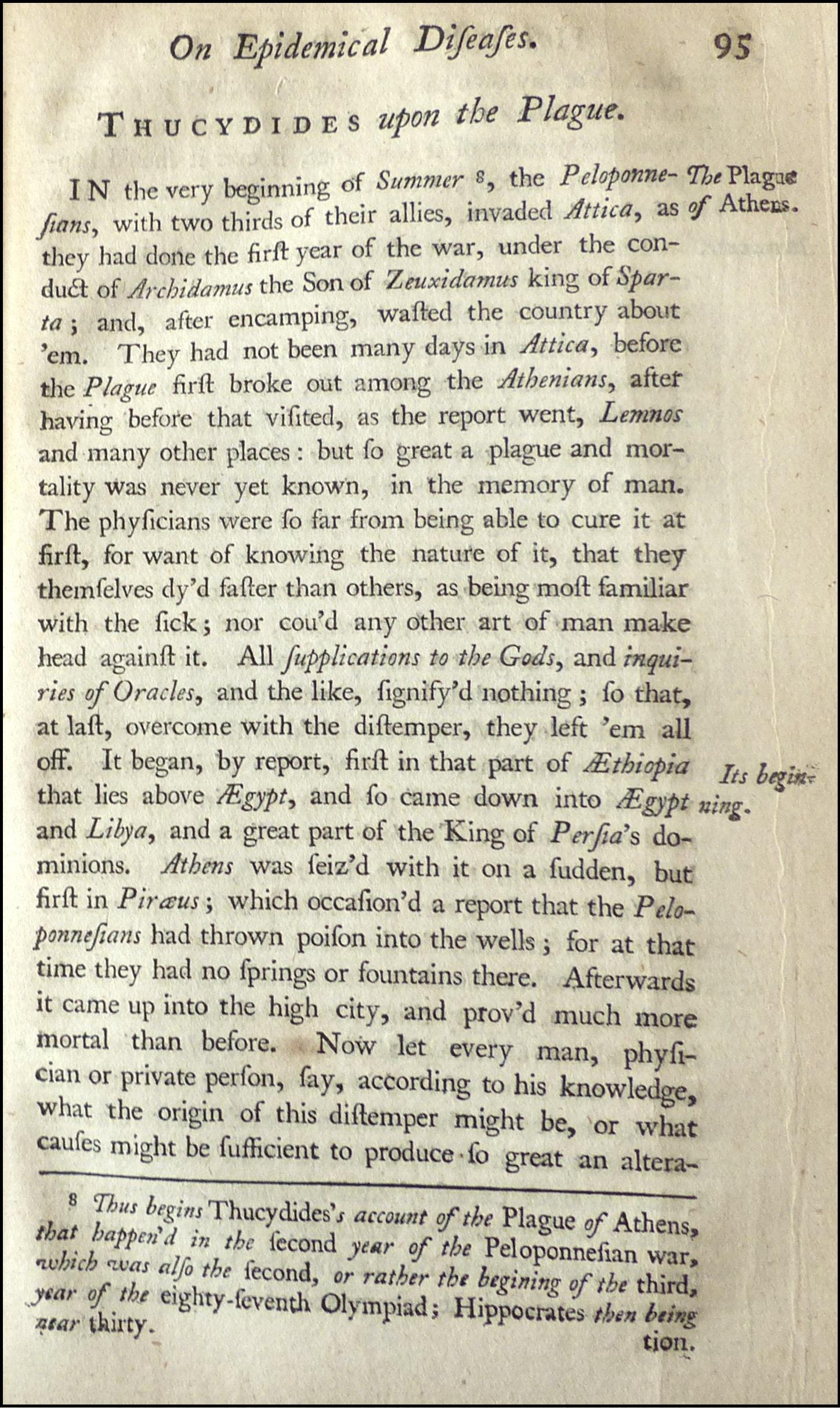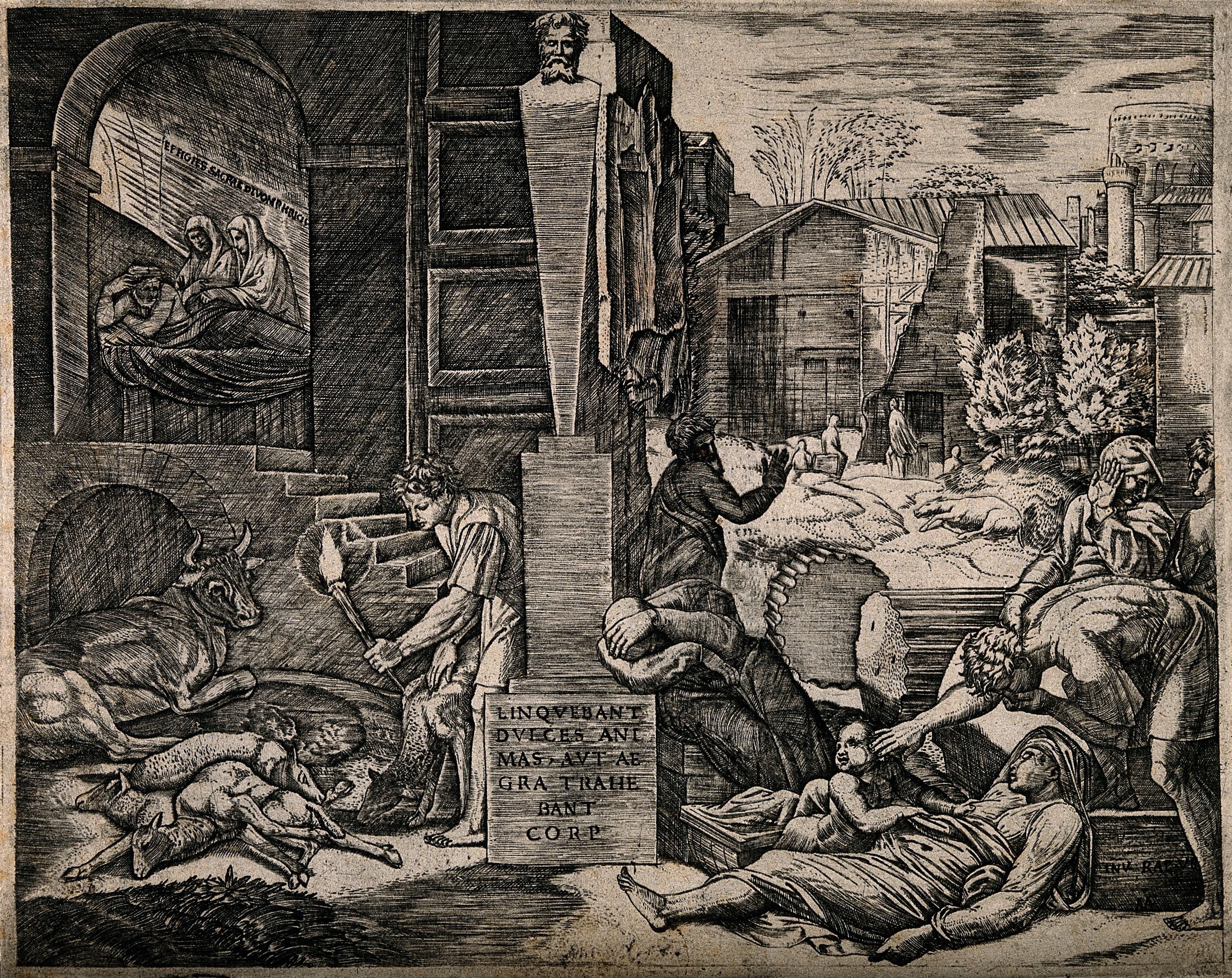
Plague art – paintings, sculptures, prints – dedicated to depicting the destruction wrought by the successive cycles of the bubonic plague that decimated medieval and early modern Europe, became popular as soon as the Black Death appeared in 1348. In the sixteenth century, classical subjects, based on plague narratives found in the works of the great Greek and Roman authors, became popular with artists as part of the larger interest in the classics that was part of the Renaissance. Artists made images of the plague attacking and destroying cities, staging the plague as a civic disease that affected the entire city population. The plague could be punishment for a city’s sins or hubris; in these images the plague is a horror suffered collectively, not the individual tragedy of the sick patient or grieving family.
In book three of the Aeneid, Virgil recounts how the Trojan survivors had begun to thrive in their new city of Pergamea when they were ravaged by a horrible plague, leading to the pronouncement by the Trojans that “that year death was the only yield we had.” The master Renaissance artist Raphael made several drawings of the story, which were engraved and printed in the reverse by Marcantonio Raimondi. This image is considered to be the first composition of a group of figures suffering from the plague. This print became an important prototype for later plague images and includes several significant figural motifs including a man covering his head in despair, a figure trying to protect an infant, and the diseased mother with child, which reappears in Sweerts’ painting of the plague in an ancient city, seen below.

Thucydides was the first author to utilize a documentary approach to the reporting of disease when he described the outbreak of a plague in Athens in his History of the Peloponnesian War. Here seen in a 1734 English edition by Francis Clifton, Thucydides account continued to be influential for medical historians and plague writers, and was quoted in a plague sermon as late as 1720. The Flemish painter Michael Sweerts' painting Plague in an Ancient City was long thought to depict the Athenian epidemic, although some scholars now think it depicts a different narrative. Sweerts includes the figure of the dead or dying mother with an infant at her breast, an image borrowed from Raphael’s drawings and Raimondi’s print, seen in this case.

